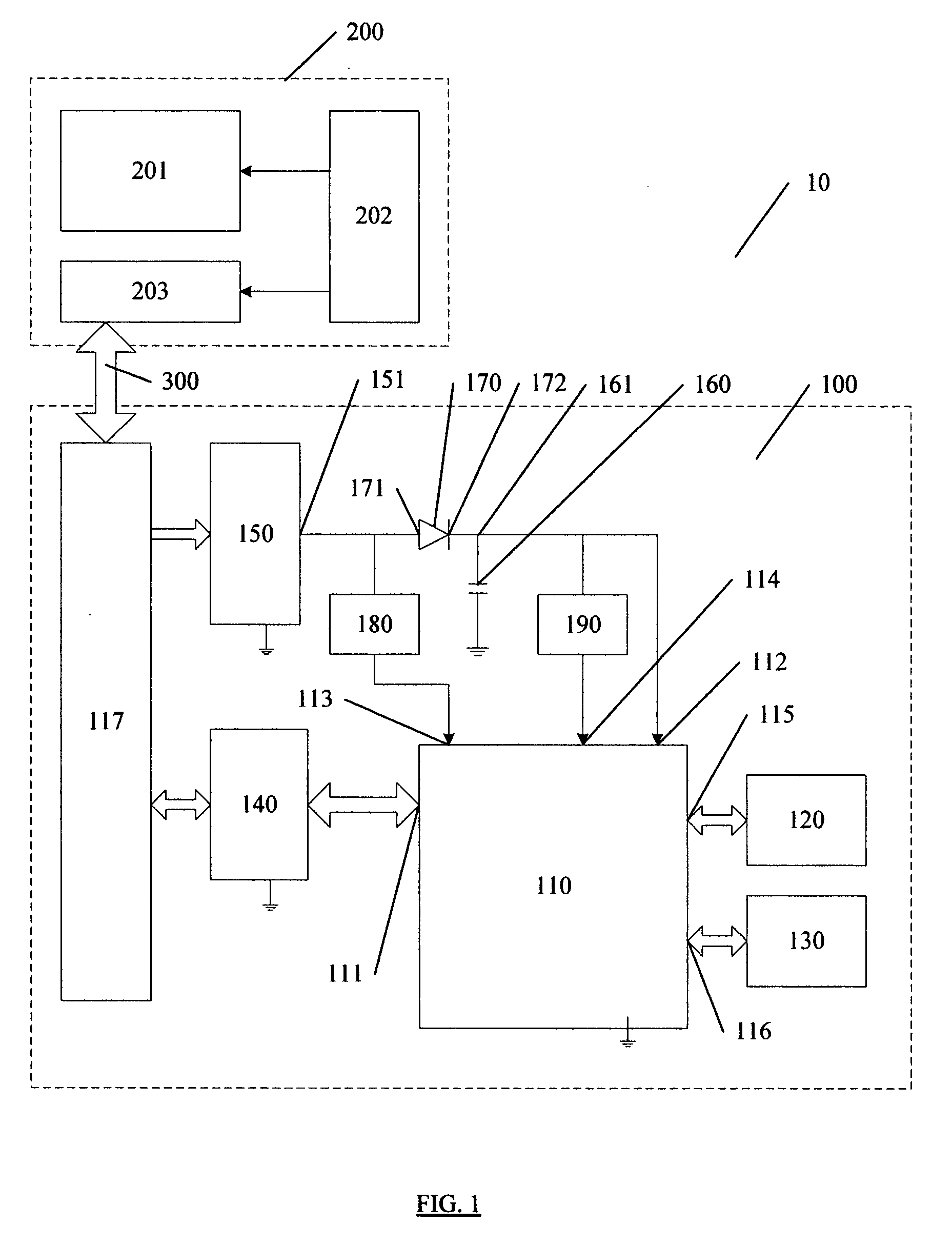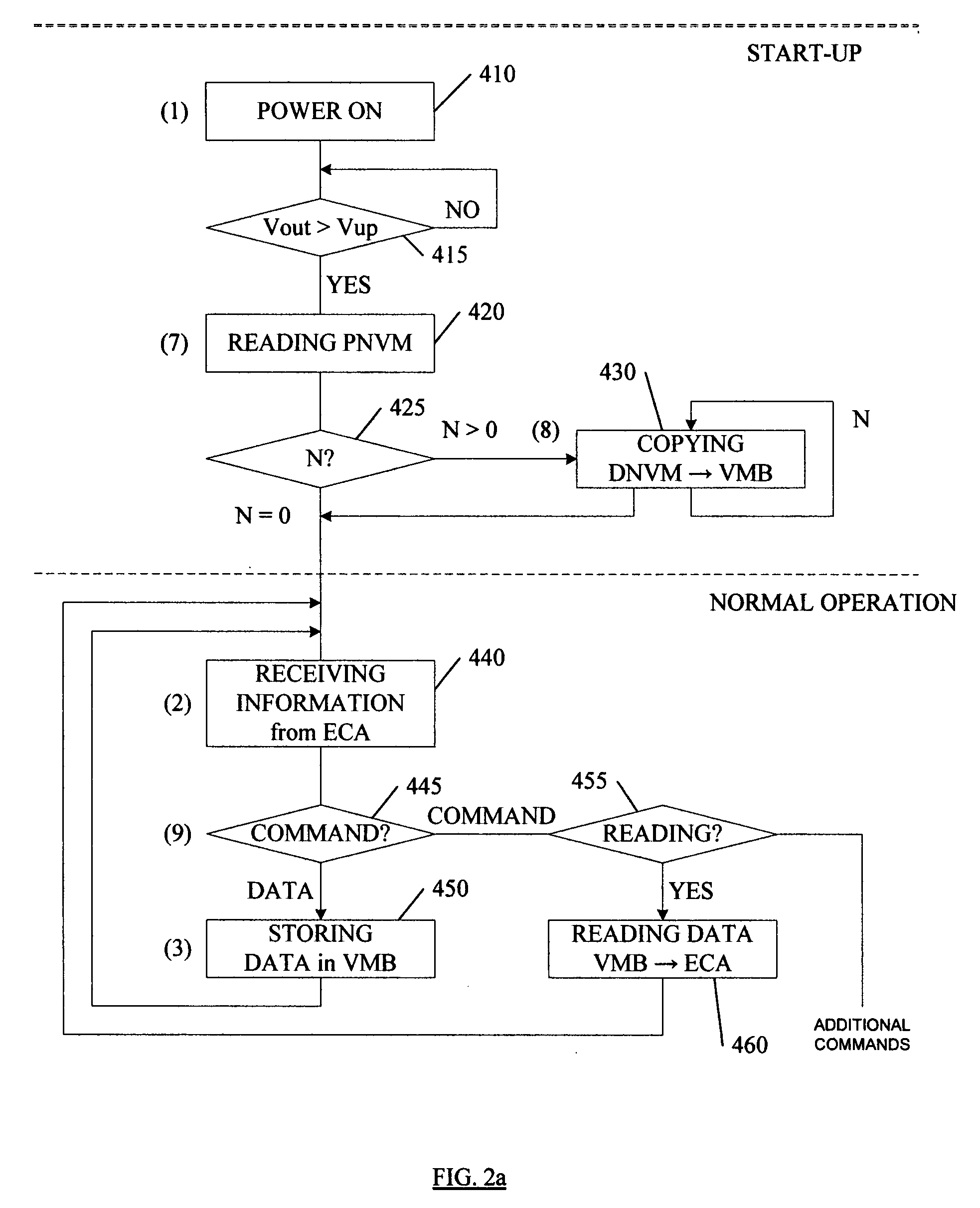Smart batteryless backup device and method therefor
a backup device and battery technology, applied in the field of smart batteryless backup devices, can solve the problems of inability to restore, difficulty in using batteries, and shortcomings of capacitors (and especially super capacitors) that have replaced batteries, so as to reduce the capacitance and charge time of internal capacitors, reduce memory size, and improve the possibility of external apparatus diagnostics
- Summary
- Abstract
- Description
- Claims
- Application Information
AI Technical Summary
Benefits of technology
Problems solved by technology
Method used
Image
Examples
first embodiment
[0053]In the case of the first embodiment FIG. 4a the curve of the capacitor discharge is the curve “c-n-m-p”. During the time interval 601-602 the data has to be stored in the NVMB 130. After the time moment 602 when the second voltage detector indicates that the voltage dropped below VminDNVM+ΔV (where ΔV≧0) the NVMB is inactive and its power consumption is negligible. During the time interval 602-605 the parameter has to be stored and the time constant for the interval 602-605 is significantly more than for the interval 601-602.
second embodiment
[0054]In the case of the second embodiment FIG. 4b the curve of the capacitor discharge is the curve “c-n-m-q” and VminPNVM=VminDNVM, where VminPNVM is the minimum operational voltage of the PNVM. This curve corresponds to the voltage drop across said capacitor 160 that is equal to operating voltage of said NVMB 130. During the time interval 601-602-604 two procedures must be executed: the data has to be stored from the VMB into the NVMB (interval 601-602) and the parameter has to be stored into the same NVMB (interval 602-605). The moment 602 (point “n”) is indicated by the second voltage detector when the voltage drops below VminDNVM+ΔV, where ΔV>0.
[0055]For the backup device operation the characteristics of used components must satisfy the following relations. The time interval of discharge from one voltage V1 to another V2 is equal to:
[0056]ΔT=Req*C*ln (V1 / V2)}, where: Req is the equivalent average resistance of the load circuit for the capacitor 160, C is the capacitance of the...
PUM
 Login to View More
Login to View More Abstract
Description
Claims
Application Information
 Login to View More
Login to View More - R&D
- Intellectual Property
- Life Sciences
- Materials
- Tech Scout
- Unparalleled Data Quality
- Higher Quality Content
- 60% Fewer Hallucinations
Browse by: Latest US Patents, China's latest patents, Technical Efficacy Thesaurus, Application Domain, Technology Topic, Popular Technical Reports.
© 2025 PatSnap. All rights reserved.Legal|Privacy policy|Modern Slavery Act Transparency Statement|Sitemap|About US| Contact US: help@patsnap.com



